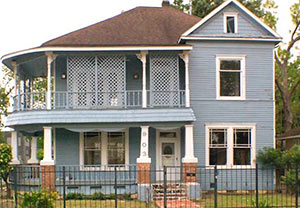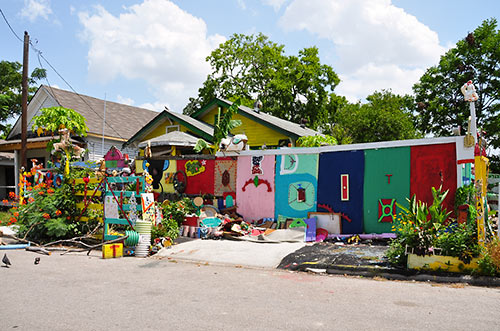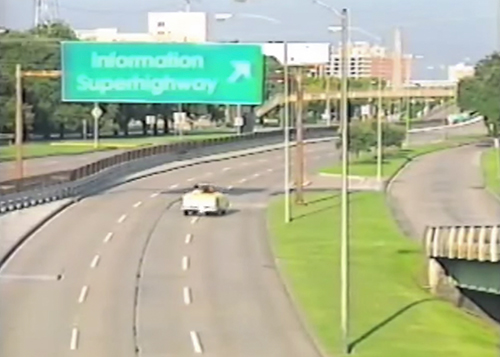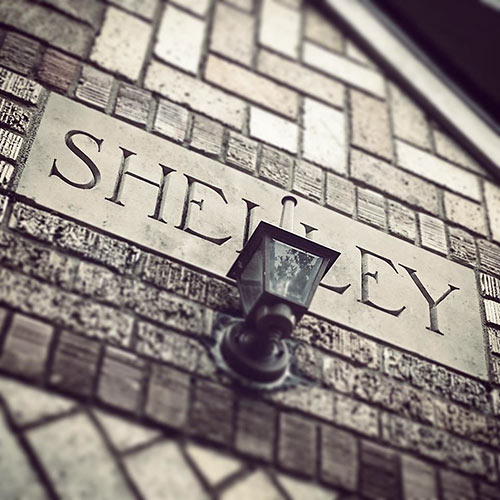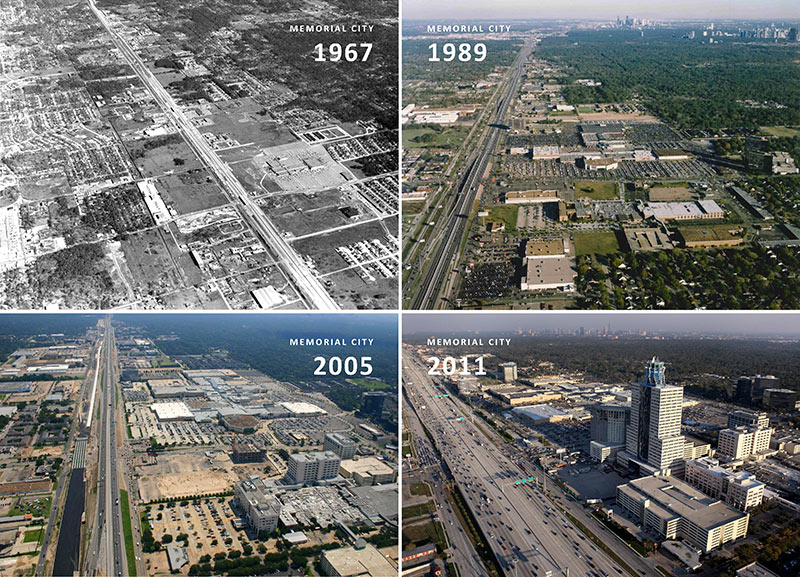
From high atop its I-10-side rooftop robo-pineapple, the powers-that-be at MetroNational have heard of your desires to see a timelapse video illustrating the monstrous growth of Memorial City, just as it prepares to spill north across the mighty 30-lane Katy Fwy. Well, the company’s marketing department has, at least. And has bestowed upon Swamplot readers the next-best thing: the tetraptych pictured above, featuring aerial shots dating back almost 50 years and extending to . . . 4 years ago.
But what’s happened since? Edge City gotta keep up with the times! It now stands out above the expanse of west Houston sprawl in blazing color:


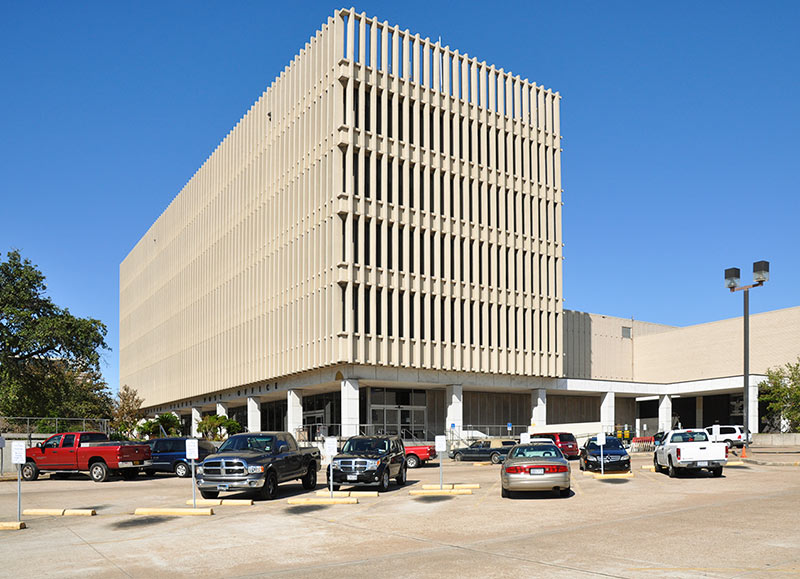 What Houston should be preserving for future generations, Scott Vogel ultimately argues in his editor’s note for the latest issue of Houstonia, is its glorious legacy of demolishing its own past
What Houston should be preserving for future generations, Scott Vogel ultimately argues in his editor’s note for the latest issue of Houstonia, is its glorious legacy of demolishing its own past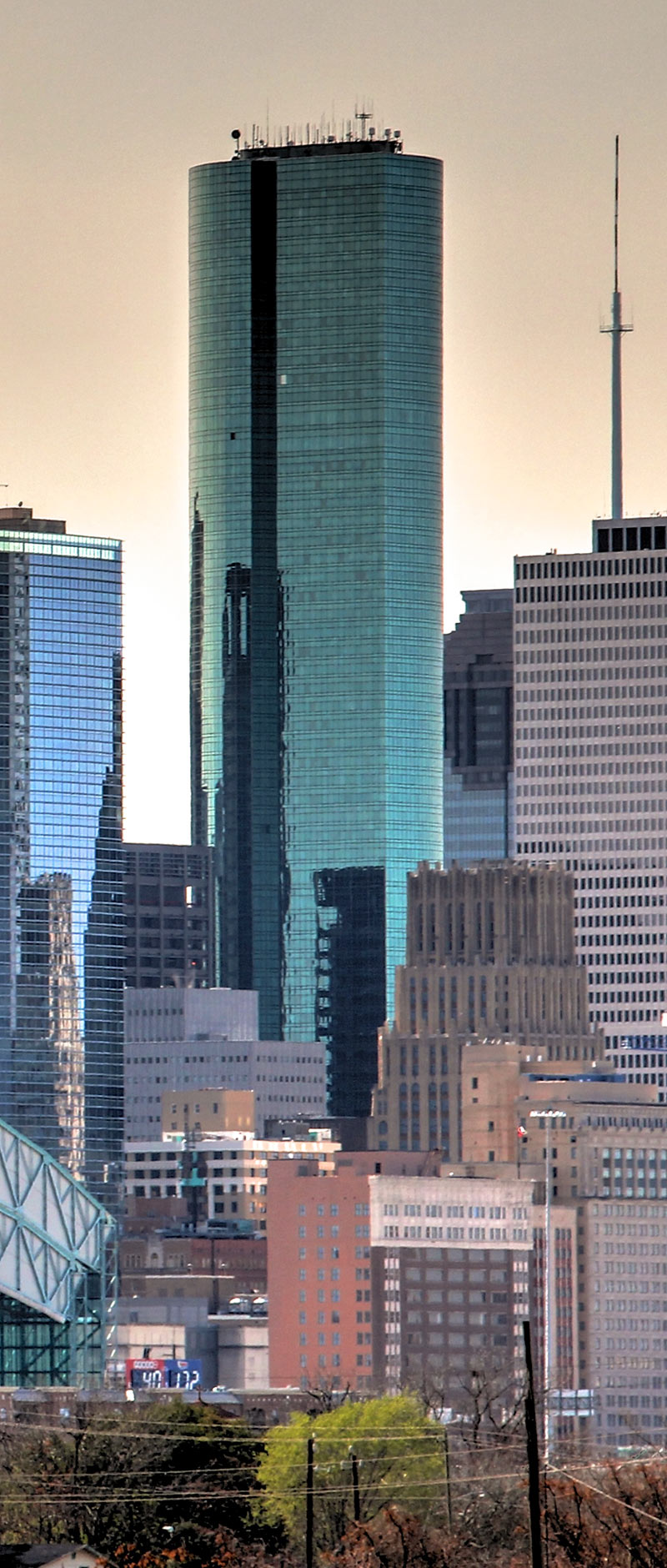 Houstonians who were around for Hurricane Alicia in 1983 might remember that the Wells Fargo Plaza tower downtown — then known as the brand-new Allied Bank Plaza — ended up losingÂ
Houstonians who were around for Hurricane Alicia in 1983 might remember that the Wells Fargo Plaza tower downtown — then known as the brand-new Allied Bank Plaza — ended up losing 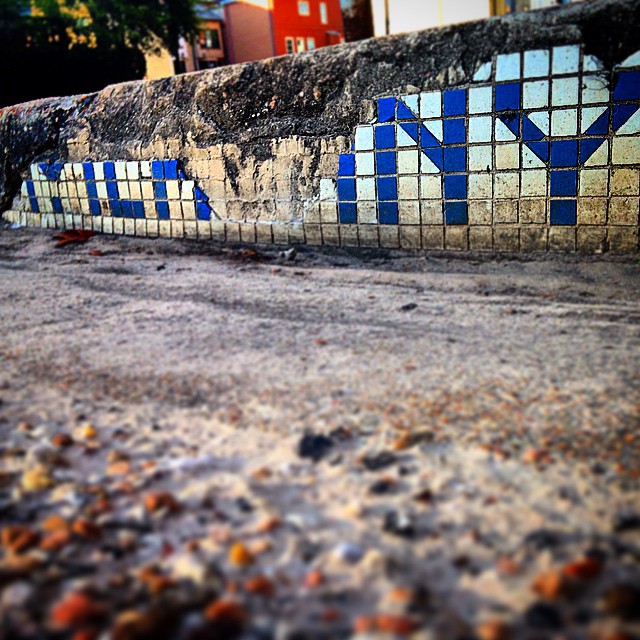
 “I lived there from 1984-1990, from 2nd to 7th grade. I remember there being a ton of empty houses by the end. They never finished the neighborhood either, given that the problems occurred and people knew about it by the end. You’d have entire streets with 4 or 5 houses on it. My friends and I would play baseball, or football in those empty lots. We’d hit baseballs through windows of abandoned homes, and it’d be a dare to ‘go into that ghost house’ to get the ball back.
I remember going back in 1993 or so, and the entire place was empty, boarded up. It was sad. My dad and I hopped the fence and walked back to where our house was. We were there for about 5 minutes when the police came and wanted to know what the hell we were doing. Apparently, it’d become a place for squatters.
By 1995 the
“I lived there from 1984-1990, from 2nd to 7th grade. I remember there being a ton of empty houses by the end. They never finished the neighborhood either, given that the problems occurred and people knew about it by the end. You’d have entire streets with 4 or 5 houses on it. My friends and I would play baseball, or football in those empty lots. We’d hit baseballs through windows of abandoned homes, and it’d be a dare to ‘go into that ghost house’ to get the ball back.
I remember going back in 1993 or so, and the entire place was empty, boarded up. It was sad. My dad and I hopped the fence and walked back to where our house was. We were there for about 5 minutes when the police came and wanted to know what the hell we were doing. Apparently, it’d become a place for squatters.
By 1995 the 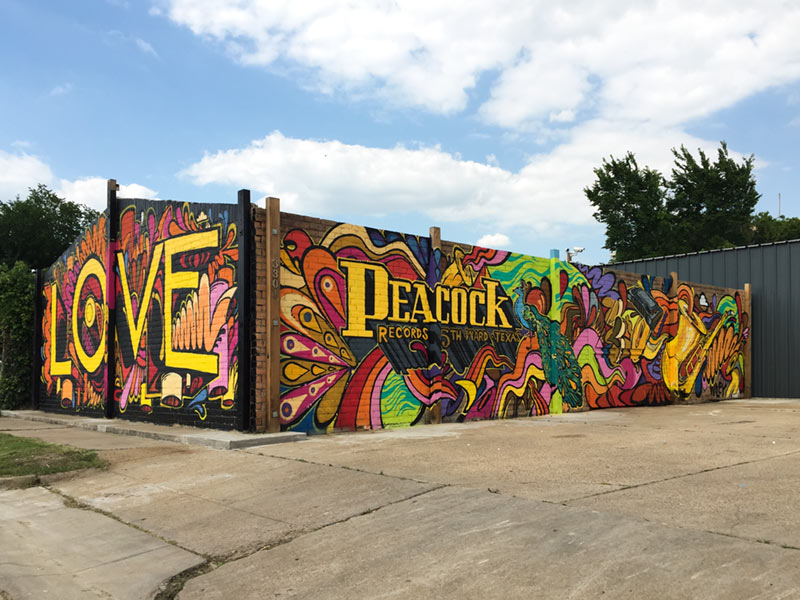
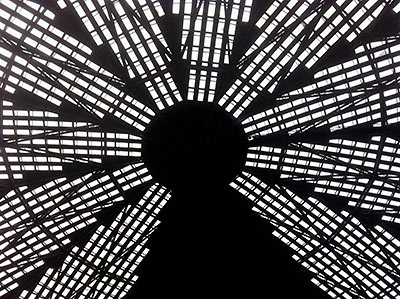 Before players had that problem losing fly balls in the
Before players had that problem losing fly balls in the 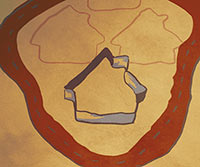 “. . . That is, and always has been, Houston. That unruly sprawl, those cookie-cutter suburbs, generic strip malls, traffic congestion, that all existed long before the Beltway was built. I grew up here, in a cookie-cutter suburb called ‘Sagemont’ located next to a 2 lane stretch of blacktop named ‘South Belt.’ My dad grew up in a cookie-cutter suburb 10 miles closer in, filled with generic strip malls, just outside what would become the 610 Loop. Today I live in another cookie-cutter suburb farther west, about half way between 610 and the Beltway. Still lots of congestion, sprawl, strip centers, etc. This is Houston, baby.
And just about everything in Houston exists because some powerful person (not necessarily a politician) owned tracts of land. All of those hip dense neighborhoods? They were empty fields that some speculator bought for next to nothing, then bribed . . . er, influenced someone in government to build something, often with tax dollars. That’s how things get done.” [
“. . . That is, and always has been, Houston. That unruly sprawl, those cookie-cutter suburbs, generic strip malls, traffic congestion, that all existed long before the Beltway was built. I grew up here, in a cookie-cutter suburb called ‘Sagemont’ located next to a 2 lane stretch of blacktop named ‘South Belt.’ My dad grew up in a cookie-cutter suburb 10 miles closer in, filled with generic strip malls, just outside what would become the 610 Loop. Today I live in another cookie-cutter suburb farther west, about half way between 610 and the Beltway. Still lots of congestion, sprawl, strip centers, etc. This is Houston, baby.
And just about everything in Houston exists because some powerful person (not necessarily a politician) owned tracts of land. All of those hip dense neighborhoods? They were empty fields that some speculator bought for next to nothing, then bribed . . . er, influenced someone in government to build something, often with tax dollars. That’s how things get done.” [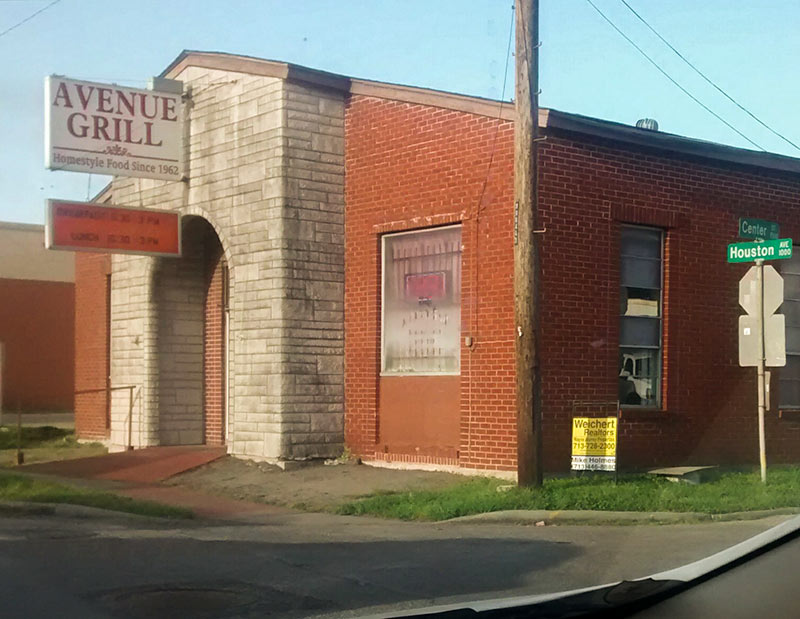
 “The whole Houston region used to be a beautiful coastal plain where my family and extended family lived harmoniously with nature before 5,000,000 people showed up and paved over the whole damn place and called it Houston. Now I’m sad.
— Sincerely,
Karankawa Nation” [
“The whole Houston region used to be a beautiful coastal plain where my family and extended family lived harmoniously with nature before 5,000,000 people showed up and paved over the whole damn place and called it Houston. Now I’m sad.
— Sincerely,
Karankawa Nation” [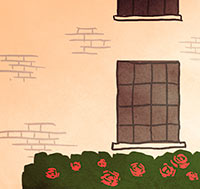 “My great-great grandparents purchased the land mentioned in the above article when there were just a few houses on the street, and the street was not yet paved. They built this house and 3 generations of my family lived together under its roof at one time. My grandparents met working at the movie theater that used to stand in the Village Arcade. My grandfather was an usher and my grandmother was a concession girl. He used to sneak her out of her bedroom window for dates when she was 15 and he was 16, a few years before he joined the Navy to fight in WWII. My great-grandfather planted rose bushes in front of his daughter’s bedroom window to stop her from climbing out. When my grandparents were first married, they lived in the house with her parents and grandparents. My parents lived in the house after they got married, and I lived my whole life on Chaucer until I got married. My grandfather remained in the house long after his wife passed, and himself lived there until he passed away early last year. All of my best memories were set within those walls, all the family meals, holidays and birthdays.
Driving past the muddy, empty lot felt like looking at someone’s usual armchair after they’ve passed away and expecting to see them sitting there, right as rain. Seeing those beautiful bone-colored porcelain bricks trampled under tire tracks . . . It took the air out of me. I hope that by sharing this history, people will understand that sometimes, a house is more than just 4 walls and a roof; this house was more than just a location and a parcel of land. Sometimes, it is the root that anchors us to our past, to our identity, to our origin.” [
“My great-great grandparents purchased the land mentioned in the above article when there were just a few houses on the street, and the street was not yet paved. They built this house and 3 generations of my family lived together under its roof at one time. My grandparents met working at the movie theater that used to stand in the Village Arcade. My grandfather was an usher and my grandmother was a concession girl. He used to sneak her out of her bedroom window for dates when she was 15 and he was 16, a few years before he joined the Navy to fight in WWII. My great-grandfather planted rose bushes in front of his daughter’s bedroom window to stop her from climbing out. When my grandparents were first married, they lived in the house with her parents and grandparents. My parents lived in the house after they got married, and I lived my whole life on Chaucer until I got married. My grandfather remained in the house long after his wife passed, and himself lived there until he passed away early last year. All of my best memories were set within those walls, all the family meals, holidays and birthdays.
Driving past the muddy, empty lot felt like looking at someone’s usual armchair after they’ve passed away and expecting to see them sitting there, right as rain. Seeing those beautiful bone-colored porcelain bricks trampled under tire tracks . . . It took the air out of me. I hope that by sharing this history, people will understand that sometimes, a house is more than just 4 walls and a roof; this house was more than just a location and a parcel of land. Sometimes, it is the root that anchors us to our past, to our identity, to our origin.” [